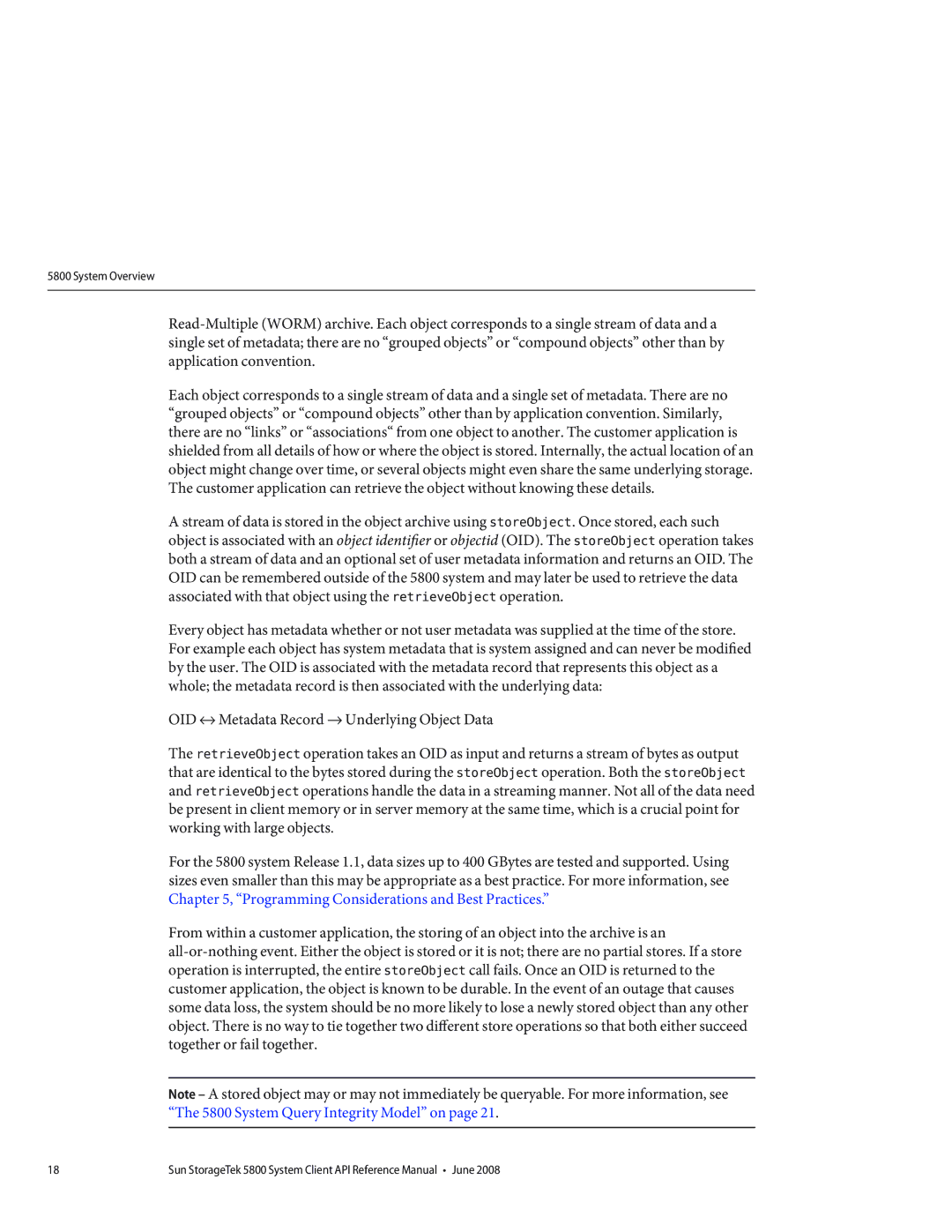
5800 System Overview
Each object corresponds to a single stream of data and a single set of metadata. There are no “grouped objects” or “compound objects” other than by application convention. Similarly, there are no “links” or “associations“ from one object to another. The customer application is shielded from all details of how or where the object is stored. Internally, the actual location of an object might change over time, or several objects might even share the same underlying storage. The customer application can retrieve the object without knowing these details.
A stream of data is stored in the object archive using storeObject. Once stored, each such object is associated with an object identifieror objectid (OID). The storeObject operation takes both a stream of data and an optional set of user metadata information and returns an OID. The OID can be remembered outside of the 5800 system and may later be used to retrieve the data associated with that object using the retrieveObject operation.
Every object has metadata whether or not user metadata was supplied at the time of the store. For example each object has system metadata that is system assigned and can never be modified by the user. The OID is associated with the metadata record that represents this object as a whole; the metadata record is then associated with the underlying data:
OID ↔Metadata Record →Underlying Object Data
The retrieveObject operation takes an OID as input and returns a stream of bytes as output that are identical to the bytes stored during the storeObject operation. Both the storeObject and retrieveObject operations handle the data in a streaming manner. Not all of the data need be present in client memory or in server memory at the same time, which is a crucial point for working with large objects.
For the 5800 system Release 1.1, data sizes up to 400 GBytes are tested and supported. Using sizes even smaller than this may be appropriate as a best practice. For more information, see Chapter 5, “Programming Considerations and Best Practices.”
From within a customer application, the storing of an object into the archive is an
Note – A stored object may or may not immediately be queryable. For more information, see “The 5800 System Query Integrity Model” on page 21.
18 | Sun StorageTek 5800 System Client API Reference Manual • June 2008 |
